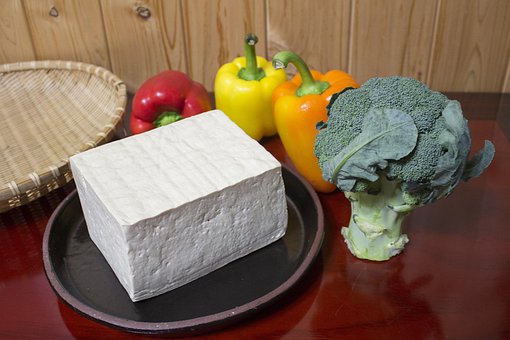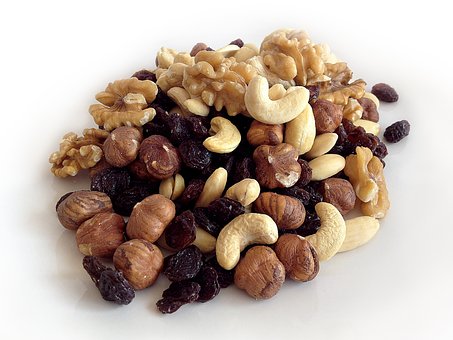9 Foods High in Omega-6, and What You Should Know
Omega-6 fatty acids are an essential component of a diet that is balanced and nutritious.
They are present in a wide variety of foods that are high in nutrition, such as nuts, seeds, and vegetable oils.
This article explains how to achieve optimal health by consuming a variety of these fats in the right proportions, which is beneficial to one’s overall health.
What is an adequate amount of omega-6 for you?
Several different kinds of food contain polyunsaturated fat known as omega-6 fatty acids.
One of the most prevalent types is called linoleic acid, and its chemical formula is typically written as 18:2 (n-6). Other types include gamma-linolenic acid with the formula 18:3 and arachidonic acid with the formula 20:4 (n-6).
Your body requires these fatty acids to function properly, but it is unable to produce them on its own. Therefore, they are referred to as essential fatty acids. That indicates that you can only get them from the food you eat.
On the other hand, it is believed that inflammation and chronic disease can be caused by eating a diet that is high in omega-6 fatty acids relative to omega-3 fatty acids.
According to the findings of some studies, the diets of our ancestors included an equal amount of omega-6 and omega-3 fatty acids in their daily intake. But modern Western diets have a ratio of about 17:1 omega-6 to omega-3 fatty acids, which is significantly higher than in the past.
According to the Academy of Nutrition and Dietetics, women and men between the ages of 19 and 50 have different daily omega-6 fatty acid requirements: approximately 12 grams for women and 17 grams for men.
To maintain a healthy ratio, it is important to consume foods high in omega-6 fatty acids in moderation and to complement those foods with a sufficient amount of omega-3 fatty acids, which can be obtained from foods such as fatty fish, nuts, and seeds.
The following is a list of 9 nutritious foods that are high in omega-6 fatty acids, along with the amount of linoleic acid that they contain per serving.
1. Walnuts
Walnuts are a common species of the genus Juglans, which belong to the family Juglandaceae, and are known for their high content of beneficial nutrients such as fiber and minerals such as manganese, copper, phosphorus, and magnesium.
Walnuts are a nutritious food that can be eaten on their own as a snack, or they can be sprinkled on salads, yogurt, or oatmeal to increase the number of nutrients that are provided by those foods.
2. Oil made from safflowers
Safflower plant seeds are typically used to extract the edible oil known as safflower oil.
Safflower oil, like other vegetable oils, is rich in monounsaturated fat. A type of fatty acid known as monounsaturated fat has been shown to help improve cardiovascular health.
Because it is flavorless, safflower oil is excellent for use in a wide variety of dishes, including stir-fries, baked goods, salad dressings, and sauces.
3. Tofu
Tofu is produced by coagulating soy milk into curds and then pressing the curds into soft blocks using pressure.
A substantial amount of several essential nutrients, such as protein, iron, calcium, and manganese, are provided in each serving.
Make an effort to incorporate tofu into your weekly meal rotation by preparing a tofu scramble, sprinkling it over salads, or substituting it for meat in the main courses you prepare.

4. Hemp seeds
The hemp plant, also known as Cannabis sativa, produces seeds that are referred to as hemp seeds.
Hemp seeds are an excellent source of protein, as well as phosphorus, potassium, and vitamin E. On top of that, they are loaded with fats that are good for the heart.
The nutritional value of smoothies, cereal, salads, and yogurt can all be increased by adding a sprinkle of hemp seeds to the dish.
5. Peanut butter
The roasted peanuts that go into making peanut butter give it a creamy texture.
Not only is it high in beneficial fats and protein, but it is also packed to the brim with important nutrients such as niacin, manganese, vitamin E, and magnesium.
In addition to that, it is adaptable and simple to appreciate. You could blend it into smoothies, use it as a dip for fruits and vegetables, or incorporate it into your favorite desserts by adding a scoop of it.
6. Avocado oil
Avocado pulp is used to extract avocado oil, which is then used as cooking oil.
In addition to having a high concentration of antioxidants, research conducted on animals suggests that avocado oil may also improve cardiovascular health by lowering levels of cholesterol and triglycerides.
Additionally, avocado oil has a high smoke point, which indicates that it can withstand high temperatures without decomposing or oxidizing. This is a useful characteristic of cooking oils. Because of this, it is an excellent choice for high-heat cooking methods like baking, roasting, frying, and sautéing.
7. Eggs
Eggs are an excellent source of protein, selenium, and riboflavin, in addition to a wide variety of other essential nutrients, and they can be a delectable, healthful, and flexible addition to your diet.
You can add them to breakfast burritos, sandwiches, casseroles, and salads to spice up your meals. They are most commonly enjoyed scrambled, fried, or boiled, but you can also enjoy them in these other forms.
8. Almonds
Almonds are a type of tree nut that are very common and are originally from the Middle East, but they are now cultivated all over the world.
In addition to being an excellent source of protein and fiber, they also contain a good amount of vitamin E, manganese, and magnesium.
If you want to make almond butter that is silky smooth and creamy, you can try roasting the almonds first and then adding them to a food processor afterward. Almonds on their own make a satisfying snack.
9. Cashew nuts
Cashews are a type of nut that stand out due to their buttery flavor and irregular shape that they have.
Copper, magnesium, and phosphorus are just some of the many micronutrients that are abundant in each serving.
Cashews can be turned into cashew cream by first soaking them for an entire night and then puréeing them in a food processor. This is a common way to use cashews. The addition of cashew cream to salad dressings, sauces, and soups is an excellent way to improve their flavor, consistency, and nutritional profile.

The bottom line
There is a type of essential fat known as omega-6 fatty acids, and they play an important part in the maintenance of your overall health.
Nuts, seeds, eggs, and vegetable oils are some of the best foods to consume if you’re looking for omega-6 fatty acids in your diet.
To keep a beneficial ratio of healthy fats in your diet, however, it is essential to consume a sufficient amount of omega-3 fatty acids regularly.
